Abstract
Encephalomyocarditis viruses adsorb to introduced organic and inorganic solids in water over a wide range of pH and with various concentrations and species of metal cations. Visible flocculation of solids was not a prerequisite for significant virus association. Virus adsorption to natural solids in various types of natural waters was significant but variable. Clay-adsorbed virus retained its infectivity in tissue culture monolayers. These solids-associated viruses also retained infectivity in mice.
Full text
PDF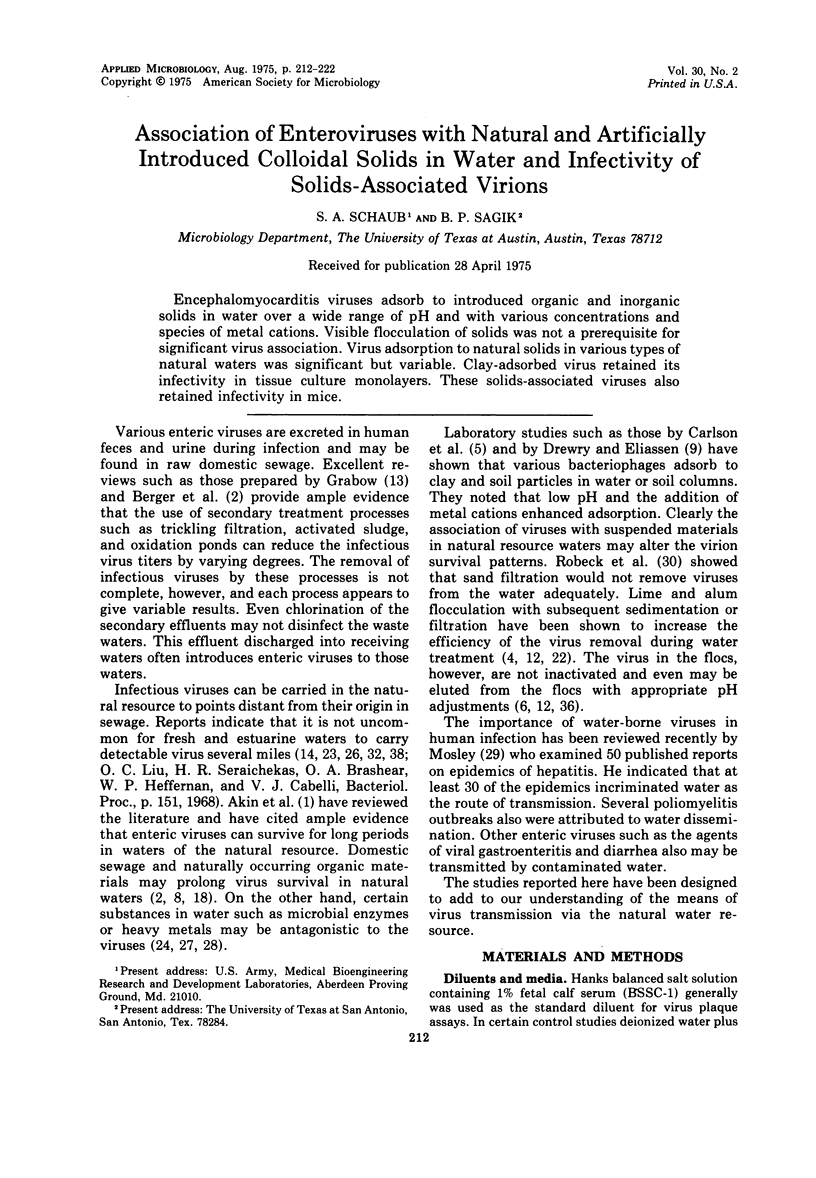
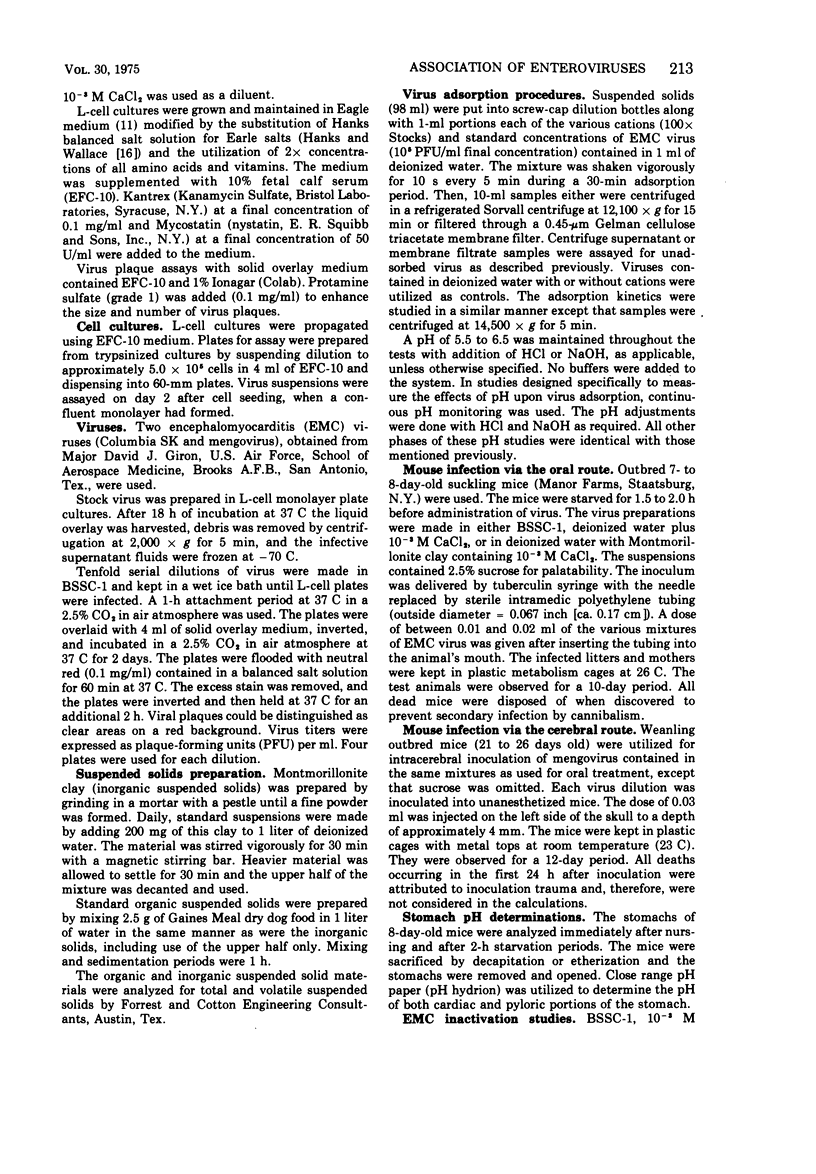
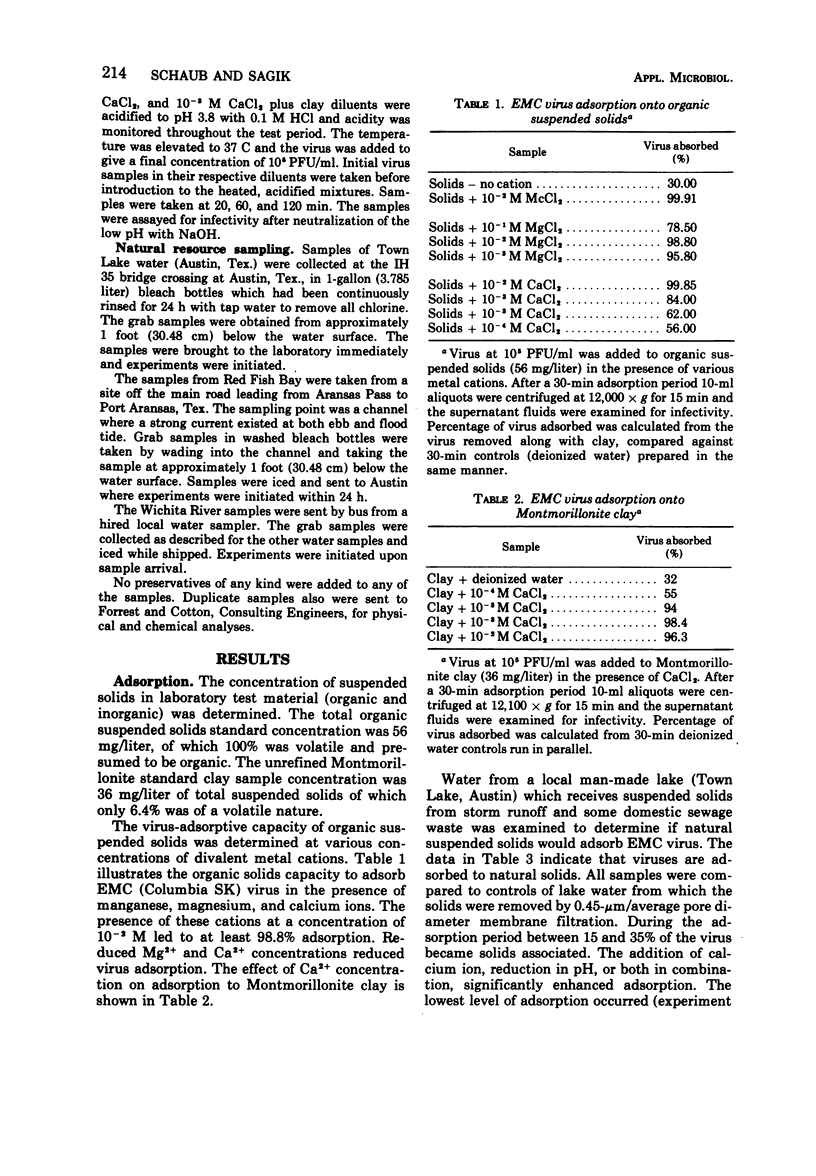
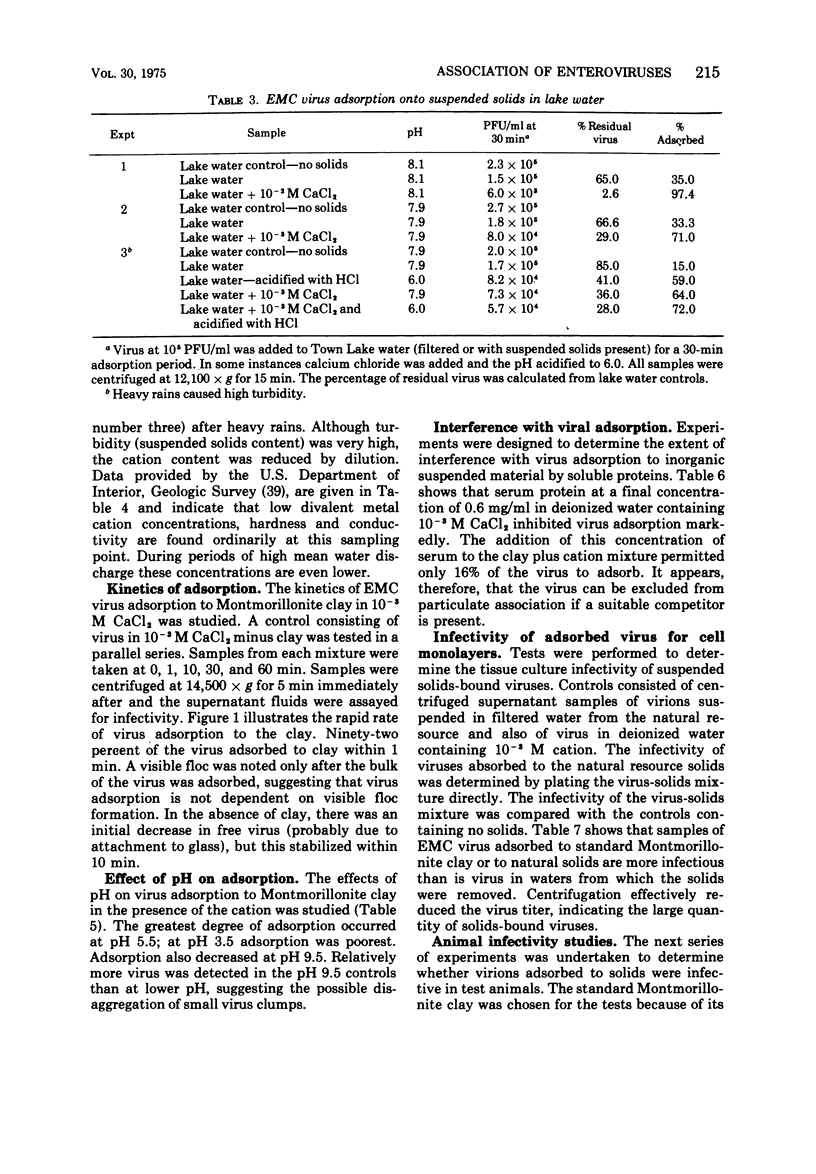
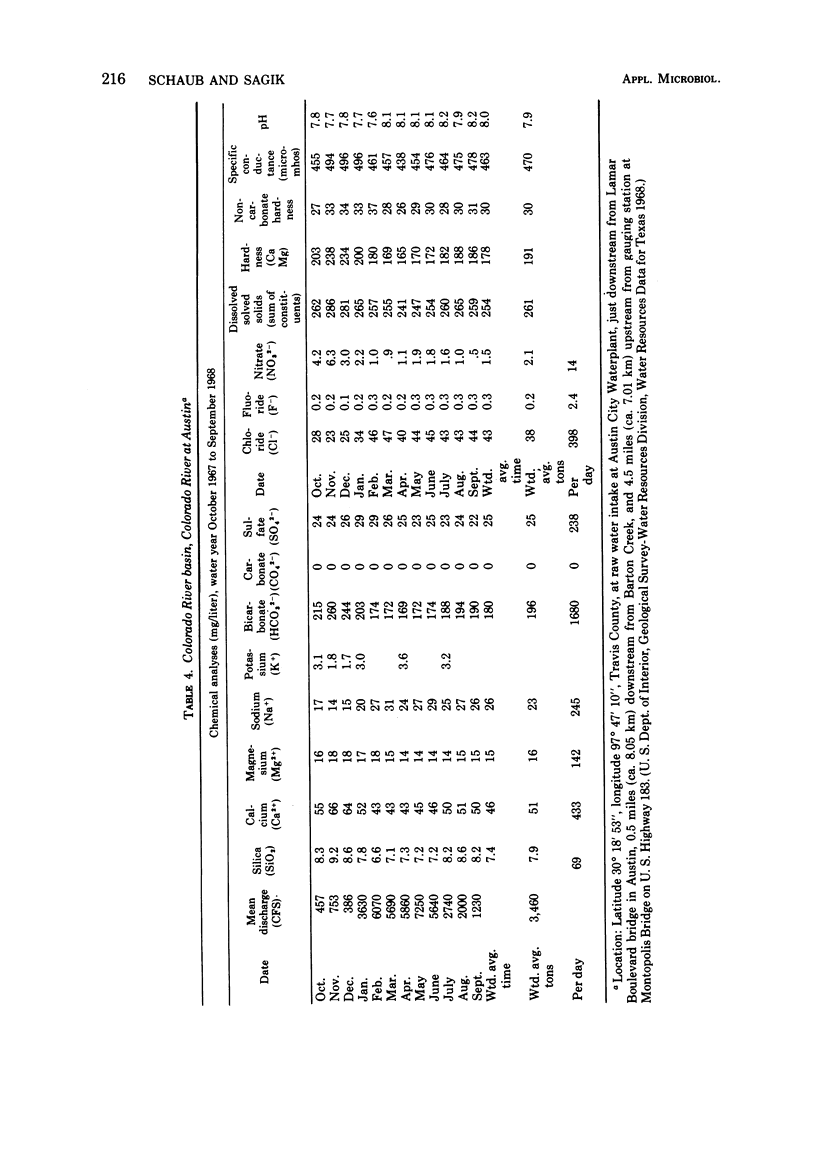
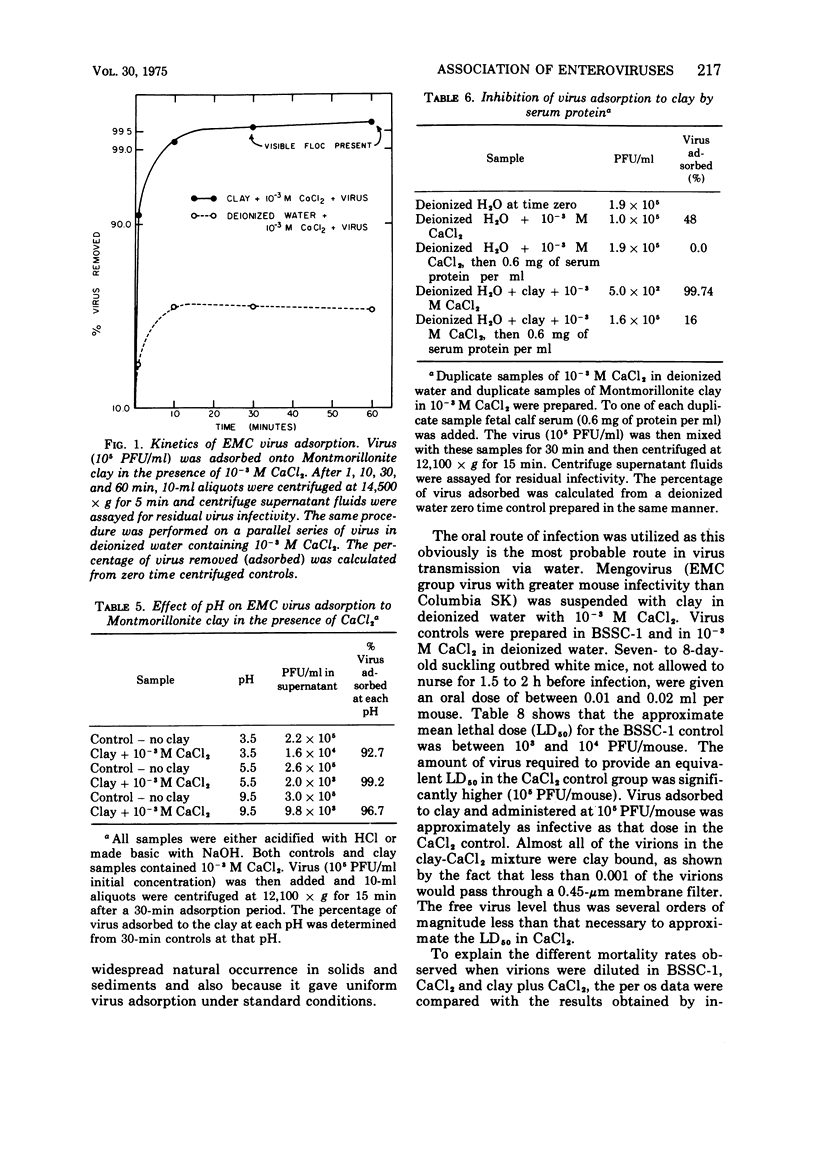
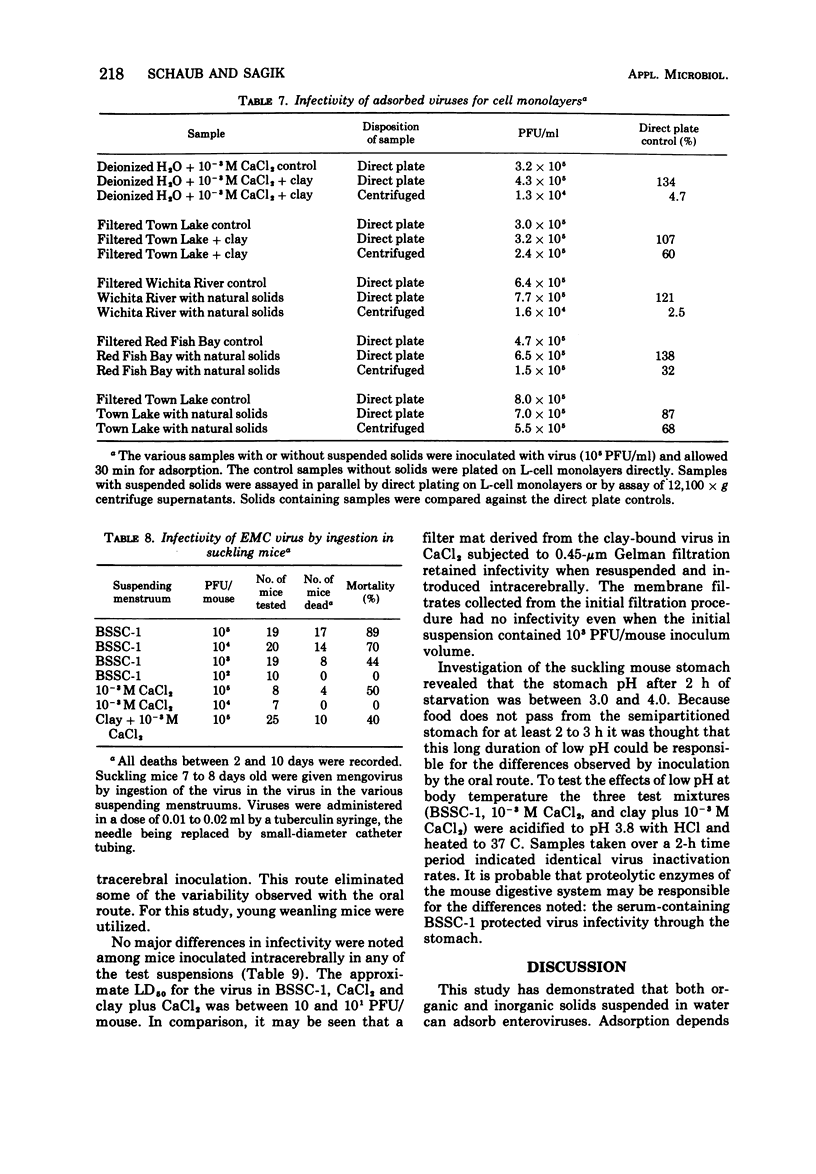
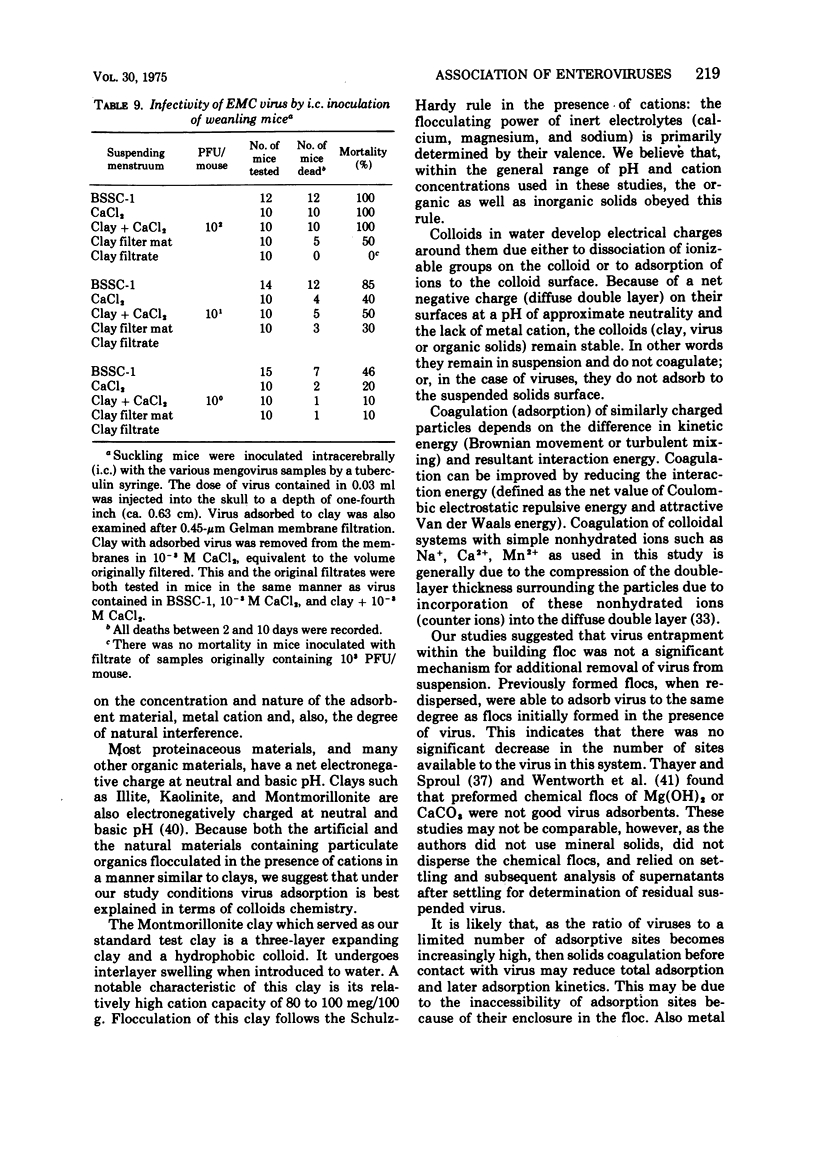
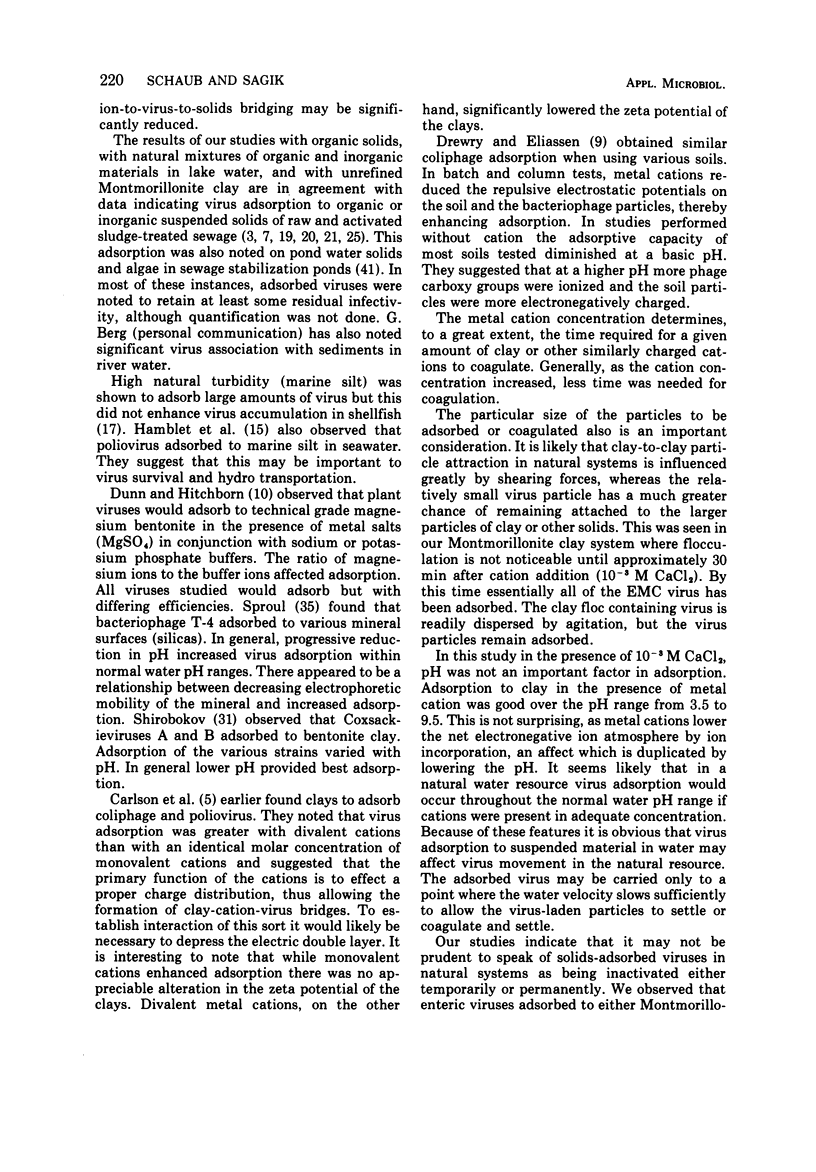
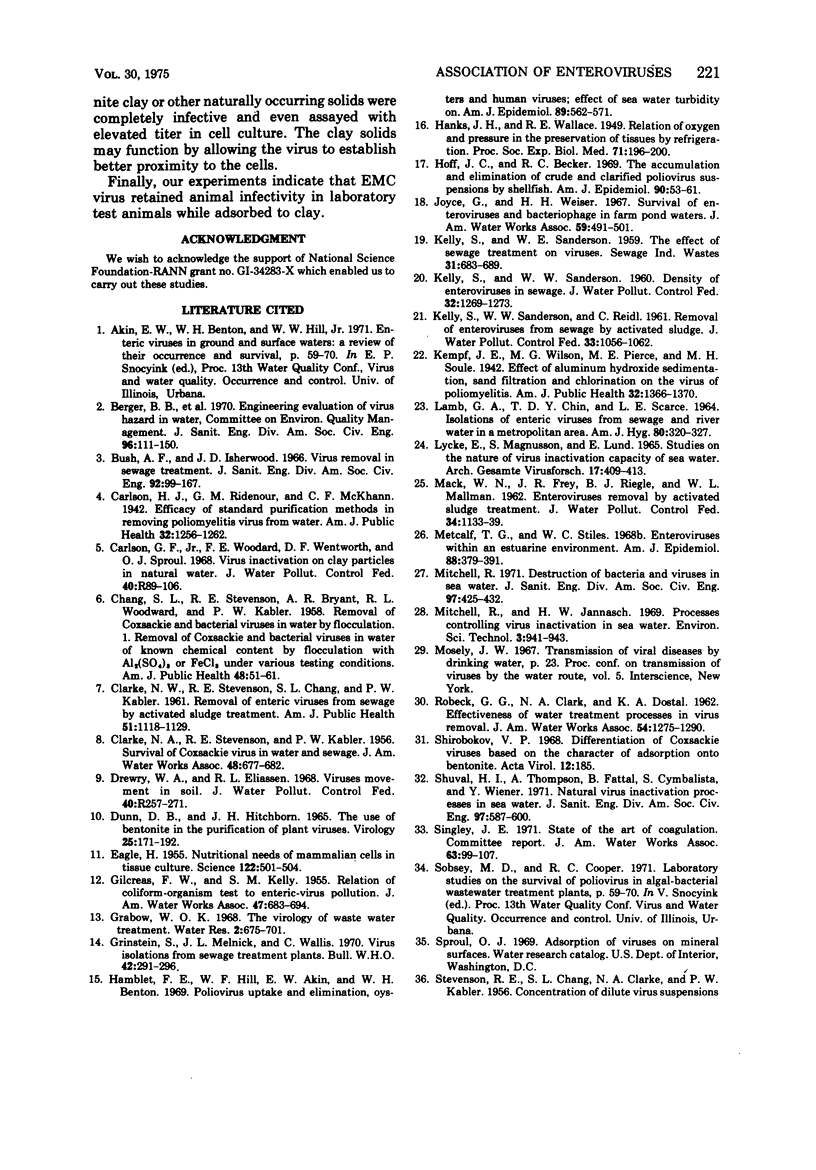
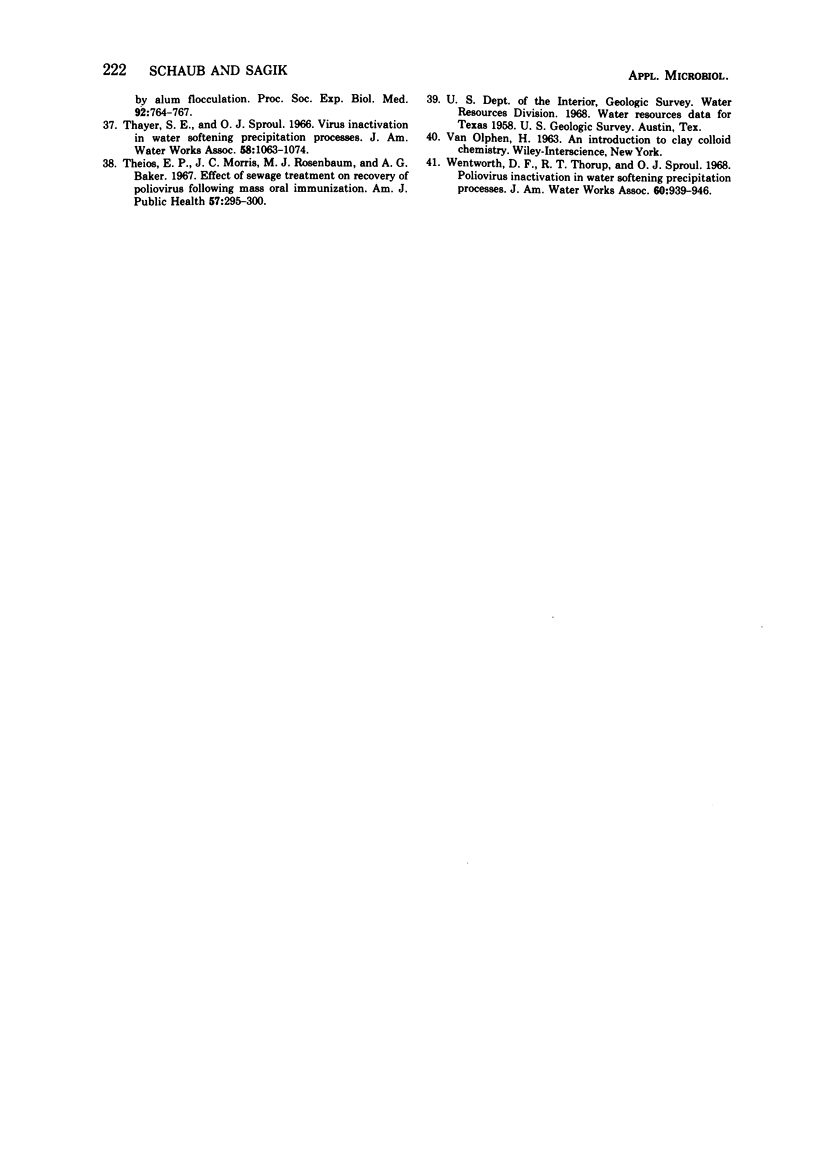
Selected References
These references are in PubMed. This may not be the complete list of references from this article.
- CHANG S. L., CLARKE N. A., KABLER P. W., STEVENSON R. E. Concentration of dilute virus suspensions by alum flocculation. Proc Soc Exp Biol Med. 1956 Aug-Sep;92(4):764–767. doi: 10.3181/00379727-92-22607. [DOI] [PubMed] [Google Scholar]
- CHANG S. L., STEVENSON R. E., BRYANT A. R., WOODWARD R. L., KABLER P. W. Removal of Coxsackie and bacterial viruses in water by flocculation. I. Removal of Coxsackie and bacterial viruses in water of known chemical content by flocculation with aluminum sulfate or ferric chloride under various testing conditions. Am J Public Health Nations Health. 1958 Jan;48(1):51–61. doi: 10.2105/ajph.48.1.51. [DOI] [PMC free article] [PubMed] [Google Scholar]
- CLARKE N. A., STEVENSON R. E., CHANG S. L., KABLER P. W. Removal of enteric viruses from sewage by activated sludge treatment. Am J Public Health Nations Health. 1961 Aug;51:1118–1129. doi: 10.2105/ajph.51.8.1118. [DOI] [PMC free article] [PubMed] [Google Scholar]
- Carlson G. F., Jr, Woodard F. E., Wentworth D. F., Sproul O. J. Virus inactivation on clay particles in natural waters. J Water Pollut Control Fed. 1968 Feb;40(2):R89–106. [PubMed] [Google Scholar]
- Carlson H. J., Ridenour G. M., McKhann C. F. Efficacy of Standard Purification Methods in Removing Poliomyelitis Virus from Water. Am J Public Health Nations Health. 1942 Nov;32(11):1256–1262. doi: 10.2105/ajph.32.11.1256. [DOI] [PMC free article] [PubMed] [Google Scholar]
- DUNN D. B., HITCHBORN J. H. THE USE OF BENTONITE IN THE PURIFICATION OF PLANT VIRUSES. Virology. 1965 Feb;25:171–192. doi: 10.1016/0042-6822(65)90198-4. [DOI] [PubMed] [Google Scholar]
- Drewry W. A., Eliassen R. Virus movement in groundwater. J Water Pollut Control Fed. 1968 Aug;(Suppl):257–271. [PubMed] [Google Scholar]
- EAGLE H. Nutrition needs of mammalian cells in tissue culture. Science. 1955 Sep 16;122(3168):501–514. doi: 10.1126/science.122.3168.501. [DOI] [PubMed] [Google Scholar]
- Grinstein S., Melnick J. L., Wallis C. Virus isolations from sewage and from a stream receiving effluents of sewage treatment plants. Bull World Health Organ. 1970;42(2):291–296. [PMC free article] [PubMed] [Google Scholar]
- Hamblet F. E., Hill W. F., Jr, Akin E. W., Benton W. H. Oysters and human viruses: effect of seawater turbidity on poliovirus uptake and elimination. Am J Epidemiol. 1969 May;89(5):562–571. doi: 10.1093/oxfordjournals.aje.a120969. [DOI] [PubMed] [Google Scholar]
- Hoff J. C., Becker R. C. The accumulation and elimination of crude and clarified poliovirus suxpensions by shellfish. Am J Epidemiol. 1969 Jul;90(1):53–61. doi: 10.1093/oxfordjournals.aje.a121049. [DOI] [PubMed] [Google Scholar]
- Kempf J. E., Wilson M. G., Pierce M. E., Soule M. H. Effect of Aluminum Hydroxide Sedimentation, Sand Filtration and Chlorination on the Virus of Poliomyelitis. Am J Public Health Nations Health. 1942 Dec;32(12):1366–1370. doi: 10.2105/ajph.32.12.1366. [DOI] [PMC free article] [PubMed] [Google Scholar]
- LAMB G. A., CHIN T. D., SCARCE L. E. ISOLATIONS OF ENTERIC VIRUSES FROM SEWAGE AND RIVER WATER IN A METROPOLITAN AREA. Am J Hyg. 1964 Nov;80:320–327. doi: 10.1093/oxfordjournals.aje.a120482. [DOI] [PubMed] [Google Scholar]
- Lycke E., Magnusson S., Lund E. Studies on the nature of the virus inactivating capacity of sea water. Arch Gesamte Virusforsch. 1965;17(3):409–413. doi: 10.1007/BF01241195. [DOI] [PubMed] [Google Scholar]
- Metcalf T. G., Stiles W. C. Enteroviruses within an estuarine environment. Am J Epidemiol. 1968 Nov;88(3):379–391. doi: 10.1093/oxfordjournals.aje.a120898. [DOI] [PubMed] [Google Scholar]
- Shirobokov V. P. Differentiation of coxsackieviruses based on the character of adsorption bentonite. Acta Virol. 1968 Mar;12(2):185–185. [PubMed] [Google Scholar]
- Theios E. P., Morris J. G., Rosenbaum M. J., Baker A. G. Effect of sewage treatment on recovery of poliovirus following mass oral immunization. Am J Public Health Nations Health. 1967 Feb;57(2):295–300. doi: 10.2105/ajph.57.2.295. [DOI] [PMC free article] [PubMed] [Google Scholar]


